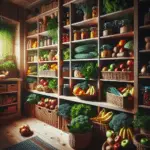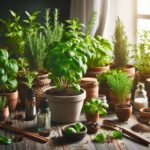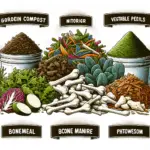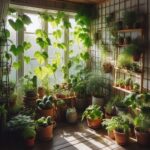Easiest vegetables to grow in texas? Gardening in Texas presents unique opportunities and challenges due to its diverse climate, which ranges from arid desert conditions in the west to more humid subtropical climates in the east. Understanding the distinct regions, such as Central Texas, North Texas, and the Dallas area, is key to making the best choices for your garden. Whether you’re gardening in Texas for beginners or have some experience, selecting the best vegetables to grow in Texas is essential for a fruitful harvest.
The benefits of growing your own vegetables in Texas are numerous. Not only do you get access to fresh, healthy produce right from your garden, but you also gain the satisfaction of cultivating plants that thrive in your local environment. Vegetables like tomatoes, peppers, and okra are among the best veggies to grow in Texas due to their resilience to heat and drought conditions. Growing garden veggies for the Dallas heat or any other region in Texas ensures that you’ll have a bounty of fresh produce suited to your local climate.
The objective of this article is to guide readers on how to start a garden in Texas, highlighting the easiest vegetables to grow and the best methods to ensure success.
By choosing the right vegetables for your region—whether it’s the best vegetables to grow in Central Texas or the best vegetables to grow in North Texas—you can overcome the challenges of Texas’ climate and maximize your gardening efforts. We will explore the best fruits and vegetables to grow in Texas, offering practical tips for both beginners and seasoned gardeners.
If you’re wondering how to start a garden in Texas, this guide will provide you with all the necessary information to succeed. From choosing easy vegetables to grow in Texas, like radishes, squash, and green beans, to understanding soil requirements and watering schedules, our aim is to equip you with the knowledge needed to make your gardening journey a rewarding experience.
No matter where you live in Texas, following this guide will help you create a flourishing vegetable garden that provides delicious, homegrown produce year-round.
2. Understanding Texas’ Climate for Gardening
2.1. Regional Climate Differences in Texas
Texas is known for its vast and varied climate, which has a direct impact on the types of vegetables that can be grown successfully. For instance, the North Texas region has a continental climate with cold winters, while Central Texas experiences hot, dry summers that require careful irrigation practices.
The Coastal region benefits from milder temperatures and higher humidity, making it ideal for certain crops. Understanding these regional climate differences is essential to determine the best vegetables to grow in North Texas, Central Texas, and beyond. Knowing what grows best where can significantly improve the success rate of your gardening efforts.
2.2. Seasonal Planting Times
One of the most important aspects of gardening in Texas is knowing when to plant your vegetables. Due to the hot summer temperatures, timing your planting correctly can make all the difference in whether your vegetables thrive or struggle.
For many of the best vegetables to grow in Texas, such as tomatoes, squash, and peppers, spring and fall are the ideal times to plant. In Central Texas, planting early in the spring helps vegetables avoid the peak summer heat, while in North Texas, frost dates need to be carefully considered. Understanding these seasonal planting times helps gardeners maximize their harvest, making it easier to grow a thriving vegetable garden.
2.3. Challenges of Growing Vegetables in Texas
Gardening in Texas presents several challenges, including extreme heat, prolonged drought periods, and soil quality issues. The intense Texas heat, particularly in regions like Dallas, can be challenging for even the most heat-tolerant vegetables. Garden veggies for the Dallas heat, such as okra and peppers, are well-suited for these conditions, but they still need proper care.
Drought is another major concern, which means efficient watering practices, such as drip irrigation, are crucial. Soil quality also varies, with some regions having heavy clay while others have sandy soil, which requires gardeners to amend the soil to provide the right nutrients for their vegetables to thrive.
By understanding the regional climate, seasonal planting times, and challenges associated with growing vegetables in Texas, you can better plan for a successful garden. This knowledge not only helps in selecting the easiest vegetables to grow in Texas but also ensures that your gardening practices are adapted to the unique conditions of your local environment. Whether you’re gardening in Texas for beginners or are more experienced, being aware of these factors will lead to a more productive and enjoyable gardening experience.
3. Top 10 Easiest Vegetables to Grow in Texas
3.1. Tomatoes
Tomatoes are one of the best vegetables to grow in Texas due to their versatility and ability to thrive in the state’s warm climate. Varieties like Roma, Celebrity, and Cherry tomatoes do particularly well in both North and Central Texas regions.
To ensure a successful harvest, it’s important to plant tomatoes in early spring or late summer to avoid the scorching peak summer temperatures. With the right care, tomatoes can provide a bountiful harvest, making them a favorite for gardening in Texas for beginners.
3.2. Peppers
Peppers, including bell peppers, jalapeños, and cayenne, are some of the best veggies to grow in Texas. These heat-loving plants are well-suited for the hot Texas sun, especially in areas like Central Texas, where summers can be particularly intense. Peppers thrive when given full sun exposure and consistent watering, making them an easy vegetable to grow even for beginner gardeners. By choosing heat-tolerant varieties, you can ensure a healthy yield throughout the growing season.
3.3. Squash and Zucchini
Squash and zucchini are quick-growing vegetables that adapt well to Texas’ diverse climate. These vegetables are not only easy to grow, but they also provide a substantial yield in a short period, making them ideal for beginner gardeners looking to achieve quick success. Planting squash in well-draining soil and providing ample sunlight will ensure they flourish. These vegetables grow particularly well in both North and Central Texas, where they can be planted in the spring or early summer.
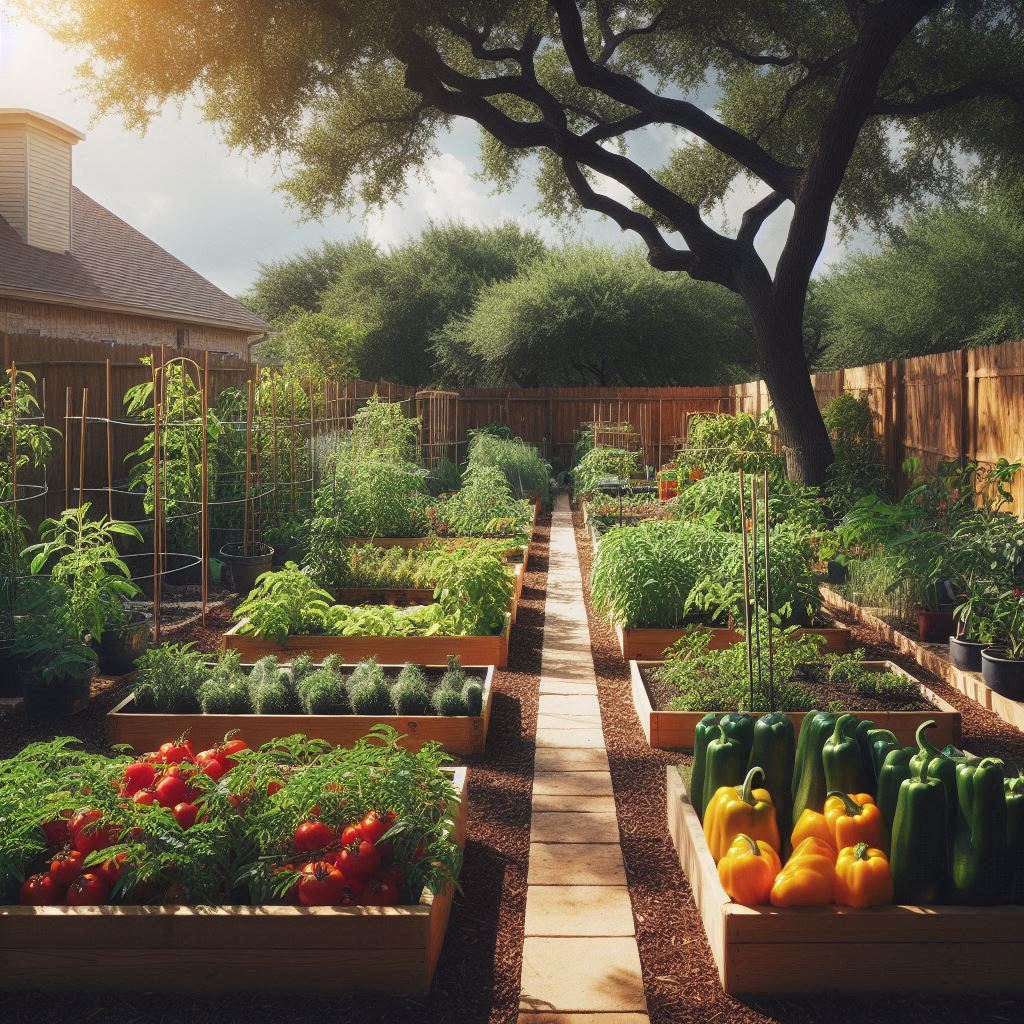
3.4. Okra
Okra is another excellent choice for Texas gardens, especially for those dealing with extreme summer temperatures. Known for its resilience, okra is one of the easiest vegetables to grow in Texas because it thrives in high heat and is drought-tolerant.
It’s a great option for garden veggies for the Dallas heat, as it requires minimal watering once established. By planting okra in full sun and harvesting pods while they are young, gardeners can enjoy a productive crop throughout the summer months.
3.5. Green Beans
Green beans, whether bush or pole varieties, are among the best vegetables to grow in Texas due to their adaptability and ease of care. Bush beans tend to mature faster and require less space, making them ideal for smaller gardens or raised beds.
Pole beans, on the other hand, produce over a longer period and benefit from trellising. Green beans are easy to grow in Texas, providing a nutritious harvest with minimal effort, perfect for beginner gardeners looking to expand their vegetable options.
3.6. Cucumbers
Cucumbers are well-suited for the Texas climate, especially when grown in rich, well-draining soil. These vegetables require consistent watering, particularly during the hottest parts of the summer, but their quick growth and abundant yield make them a popular choice for many gardeners.
The best varieties for Texas include pickling cucumbers and slicing cucumbers, which can provide a steady supply of fresh produce throughout the growing season.
3.7. Onions
Onions are an excellent vegetable to grow in Texas, particularly in Central and North Texas. Planting onions at the right time—late fall or early spring—ensures that they have enough time to mature before the peak heat of summer. Onions are relatively easy to care for, requiring well-drained soil and consistent moisture. By choosing short-day varieties, you can grow onions successfully even with the unique growing conditions in Texas.
3.8. Radishes
Radishes are among the easiest vegetables to grow in Texas, thanks to their fast growth and low maintenance requirements. They are ideal for beginners because they mature quickly—often within just a few weeks of planting. Radishes grow well in both spring and fall, making them a versatile crop for different times of the year. Their ability to grow in cooler temperatures also makes them perfect for extending the gardening season.
3.9. Kale
Kale is a hardy vegetable that can handle both cold and warm temperatures, making it one of the best vegetables to grow in Texas. It can be planted in the cooler months for a winter harvest, and many varieties are also heat-tolerant enough to survive the early summer heat.
Kale is nutrient-rich and easy to grow, making it a favorite for those who want to grow leafy greens without much hassle.
3.10. Sweet Potatoes
Sweet potatoes are well-suited to Texas’ warm climate, especially in Central and North Texas. They require a long growing season with plenty of heat, making them an ideal summer crop.
Sweet potatoes thrive in sandy, well-draining soil and need full sun to develop properly. They are one of the best vegetables for container gardening as well, allowing gardeners with limited space to still enjoy a successful harvest.
4. Preparing Your Garden for Texas Conditions
4.1. Soil Preparation
When it comes to growing vegetables in Texas, soil preparation is key to a successful garden. The state’s soil can vary significantly, ranging from sandy loam to heavy clay, which makes it important to improve the quality of your soil before planting.
Adding compost and organic matter helps boost nutrient levels and improves soil structure, making it ideal for vegetables that grow in Texas. For gardeners in Central Texas, where the soil tends to be more alkaline, adding peat moss can help lower the pH and create a better growing environment for vegetables like tomatoes, peppers, and leafy greens.
4.2. Raised Beds vs. In-Ground Gardens
Raised beds can be a great option for gardening in Texas, particularly for beginners. The benefits of raised beds in Texas conditions include better drainage, reduced compaction, and more control over soil quality. They are particularly useful for areas with heavy clay soils, such as parts of North Texas, where in-ground gardening may prove challenging.
Raised beds also allow you to adjust the soil mix to be more suitable for vegetables that grow well in Texas, such as squash, peppers, and green beans. Whether you choose raised beds or in-ground gardening, the goal is to create an environment where your plants can thrive despite Texas’ challenging conditions.
4.3. Irrigation Solutions
Effective irrigation is crucial for gardening in Texas, especially during the hot summer months when drought conditions are common. One of the best ways to ensure your vegetables receive adequate moisture is by using a drip irrigation system.
This method delivers water directly to the roots of your plants, reducing evaporation and ensuring that the water is used efficiently. This is particularly important for garden veggies for the Dallas heat, where water conservation is key to maintaining a healthy garden. Mulching around your plants also helps retain soil moisture, keeping the roots cool and minimizing the need for frequent watering.
4.4. Protection from Heat and Pests
Texas’ climate can be unforgiving, with extreme heat and a range of pests that may affect your vegetables. Shade cloth can be used to protect delicate vegetables during the hottest part of the day, ensuring they do not suffer from sunburn.
Additionally, creating barriers or using organic pest control methods can help protect your crops from common pests like aphids and beetles, which are prevalent in Texas gardens. These strategies are especially useful for beginner gardeners wondering how to start a garden in Texas that can withstand the summer heat and other environmental challenges.
5. Planting and Growing Tips for Success
5.1. Choosing the Right Varieties
To have a successful garden in Texas, it’s essential to select the best fruits and vegetables that are well-suited to the unique climate conditions across the state. For example, in Central Texas, vegetables like cherry tomatoes, peppers, and squash are particularly well-adapted to handle both the heat and the soil composition.
For North Texas, cold-hardy crops such as kale and carrots can thrive during the cooler months, while heat-tolerant varieties like okra do well in the summer. Choosing the right varieties is key to ensuring your garden yields abundant harvests throughout the year. When planning how to start a garden in Texas, be sure to consider both your region’s climate and soil conditions.
5.2. Proper Spacing and Companion Planting
Proper spacing is an important factor when growing vegetables in Texas, as it helps prevent overcrowding and promotes healthy growth. Vegetables that grow in Texas, like squash and cucumbers, need ample room to spread out, while others like bush beans can grow closer together. Companion planting is also a great strategy to maximize yields and minimize pests.
Planting marigolds alongside your tomatoes can help deter harmful insects, and pairing basil with peppers can improve their growth. Effective garden planning with proper spacing and companion planting will enhance your garden’s productivity and keep plants healthy even in challenging Texas conditions.
5.3. Mulching and Fertilizing
Texas’ extreme heat and fluctuating temperatures can dry out the soil quickly, which is why mulching is so essential for success. Adding a thick layer of mulch around your plants helps retain moisture, keeps the roots cool, and reduces water evaporation. This is especially helpful for garden veggies for the Dallas heat, where the temperature can be particularly punishing during the summer months.
Organic mulches, such as straw or wood chips, work well for this purpose. Fertilizing is another key component to maintaining healthy vegetables. Using a balanced, slow-release fertilizer will ensure that your plants receive the nutrients they need over time. Applying compost or organic fertilizers will not only nourish your plants but also improve soil quality for better future harvests.
5.4. Monitoring and Adjusting as Needed
Gardening in Texas for beginners can come with a steep learning curve, as the environment demands close attention to water, pests, and plant health. Regularly monitoring your garden helps you catch problems early—such as signs of water stress, pest infestation, or nutrient deficiencies—so you can take action before the issue gets out of hand.
Being attentive and adaptable to your garden’s needs, such as adjusting your watering schedule during dry spells or adding shade cloth for temperature-sensitive plants, will lead to a thriving and productive vegetable garden. This proactive approach is crucial for anyone looking to grow vegetables successfully in Texas, especially given the variable and often challenging conditions.
7. Harvesting and Enjoying Your Homegrown Vegetables
7.1. Harvesting Times
Harvesting vegetables at the right time is crucial for both taste and nutritional value. Knowing when to harvest depends on the type of vegetable and the growth conditions. For instance, tomatoes grown in North Texas should be harvested when they are fully colored but still firm, while leafy greens like kale can be picked continuously once the leaves are large enough.
The best vegetables to grow in Texas, such as peppers and cucumbers, should be harvested early in the morning when they are the most hydrated. This helps to ensure that your produce maintains its freshness and crispness after picking. Observing changes in color, size, and firmness can help you determine the perfect harvest time for each vegetable in your Texas garden.
7.2. Storage Tips
After harvesting, proper storage of your vegetables is key to maintaining their freshness and flavor. Vegetables that grow in Texas, such as squash and green beans, often need different storage methods. For example, root vegetables like onions and garlic do well when stored in a cool, dry place, while leafy greens are best kept in a refrigerator with a bit of moisture.
Using breathable bags can extend the life of vegetables by allowing some air circulation while keeping them from drying out too much. It’s important to store different vegetables separately to prevent spoilage, especially for those with high ethylene production like tomatoes, which can hasten ripening and overripening of other produce.
7.3. Recipes Using Your Fresh Vegetables
One of the most rewarding aspects of gardening in Texas is incorporating your freshly harvested produce into delicious recipes. With the best vegetables to grow in Texas like tomatoes, bell peppers, and squash, there are endless ways to enjoy the fruits of your labor.
You can use fresh tomatoes to make a simple garden salsa, ideal for summer gatherings. Roasted vegetables like zucchini and peppers can be a healthy side dish or added to a pasta for a satisfying meal. Kale, another easy vegetable to grow in Texas, is perfect for blending into smoothies or making crispy kale chips. Using your own harvest adds a touch of freshness and satisfaction to every meal, transforming simple dishes into something special.
7.4. Sharing the Harvest
Growing vegetables isn’t just about personal consumption; it’s also a wonderful way to connect with your community. Sharing extra produce with neighbors, friends, or family not only reduces waste but also spreads the joy of gardening in Texas. You can even exchange different types of vegetables with fellow gardeners to add variety to your meals.
Whether it’s a basket of garden veggies for the Dallas heat or a batch of homegrown kale, sharing your harvest builds community and encourages others to try gardening themselves. By growing easy vegetables in Texas, you’re not only providing fresh produce for yourself but also inspiring those around you to explore the joys of gardening.
8. Gardening Tools and Supplies for Texas Gardens
8.1. Essential Gardening Tools
Having the right gardening tools is crucial for ensuring success when growing vegetables in Texas. Due to the varying climate conditions across the state, some essential tools can make gardening easier and more efficient. A sturdy garden hoe is invaluable for breaking up tough Texas soil, especially in central and north Texas regions where compact clay can be a challenge.
A high-quality watering can or garden hose with a spray nozzle is also necessary to ensure your vegetables get the proper hydration, especially during the hot Texas summer months. When starting a garden in Texas, it’s also recommended to have a good pair of gardening gloves to protect your hands from sharp thorns and rough soil, as well as a hand trowel for transplanting seedlings and managing soil in smaller spaces.
8.2. Shade Cloths and Protective Netting
Texas heat can be intense, particularly during the peak of summer, and this can put significant stress on your vegetables. Using shade cloths is a highly effective method to protect your garden veggies for the Dallas heat and other areas with scorching temperatures. Shade cloths help reduce the impact of direct sunlight, allowing vegetables like tomatoes and peppers to thrive without becoming scorched.
Protective netting, on the other hand, is essential for keeping pests away from your crops. Vegetables that grow in Texas, like cucumbers and squash, can be particularly susceptible to insects such as aphids and caterpillars. Netting helps safeguard these plants, allowing them to grow healthily without the risk of pest damage, while still maintaining airflow and access to sunlight.
8.3. Irrigation Supplies for Dry Conditions
Irrigation is one of the most important aspects of gardening in Texas, where dry conditions can pose challenges, especially for beginners learning how to start a garden in Texas. Drip irrigation systems are highly recommended, as they deliver water directly to the base of each plant, minimizing water waste and ensuring the soil stays consistently moist.
This method is particularly helpful for the best vegetables to grow in central Texas, where water conservation is key. Soaker hoses are another option that provides efficient watering, helping to maintain moisture levels without oversaturating the soil. Pairing these irrigation supplies with a timer can automate the watering process, making vegetable gardening in pots or in raised beds much easier and more consistent.
8.4. Mulch and Soil Amendments
The quality of the soil is often a determining factor in how well your vegetables will grow, especially in the diverse soils found across Texas. Mulch is an essential supply that helps retain soil moisture, regulate temperature, and reduce weed growth. It’s especially beneficial for easy vegetables to grow in Texas like peppers and zucchini, which need stable moisture levels to produce well.
Organic mulches such as straw or wood chips can be placed around the base of plants to help with water retention, which is crucial during hot, dry spells. Additionally, using soil amendments like compost or well-rotted manure can significantly improve the fertility of Texas soil, making it easier for vegetables to thrive. These amendments help create the ideal environment for plant roots, improving the overall health of your garden.
9. Success Stories from Texas Gardeners
9.1. Beginner Success Stories
Many beginner gardeners in Texas have found great success by starting small and choosing the easiest vegetables to grow in Texas. For example, Mary from Central Texas began her journey with just a few raised beds, planting some of the best vegetables to grow in central Texas like tomatoes, green beans, and peppers. Despite facing challenges with the intense summer heat, Mary used mulch and a drip irrigation system to keep her garden thriving. Her story shows that even gardening in Texas for beginners can be incredibly rewarding if you focus on easy vegetables to grow in Texas and put in place practical watering techniques.
Another example is John from North Texas, who initially felt overwhelmed by the idea of starting a garden. He decided to plant okra and radishes, two of the best vegetables to grow in north Texas due to their ability to thrive in the regional climate. John utilized raised beds to manage the soil quality and found success by incorporating companion planting. His experience highlights that even those with little experience can cultivate a thriving garden by focusing on the best veggies to grow in Texas and using proper planning techniques.
9.2. Community Gardening in Texas
Community gardening has become increasingly popular across Texas, providing a sense of connection and shared purpose among local gardeners. In Dallas, a community gardening project encourages residents to grow garden veggies for the Dallas heat, focusing on varieties such as squash, cucumbers, and sweet potatoes. These projects not only offer practical tips on how to start a garden in Texas but also provide support for those struggling with issues like drought and pests. The success of these community gardens shows that collaboration and shared knowledge can lead to thriving gardens even in challenging environments.
Another notable community gardening initiative is in Austin, where gardeners focus on the best vegetables to grow in Texas, specifically those that adapt well to the local climate. This includes warm-weather crops like tomatoes and peppers, which are resilient to the hot Central Texas sun. Community gardens often hold workshops on how to enhance soil quality, create efficient irrigation solutions, and manage raised beds, making it easier for beginners to get started with vegetable gardening in Texas.
9.3. Urban Gardening in Small Spaces
In urban areas, limited space can be a challenge, but that hasn’t stopped Texas gardeners from finding creative solutions. Urban dwellers in Houston have had success with container gardening, choosing the best vegetables to grow in containers that are perfect for patios and small backyards. Vegetables like bell peppers and cherry tomatoes thrive in pots, making them an excellent choice for anyone with limited space. By utilizing garden pots for growing vegetables and placing them in strategic locations to get adequate sunlight, urban gardeners have demonstrated how even those without a traditional garden plot can enjoy homegrown produce.
A similar story comes from El Paso, where residents have turned rooftops and balconies into thriving vegetable gardens. Growing veggies in pots has become a popular method for overcoming the lack of garden space. By focusing on easy vegetables to grow in pots and using techniques like drip irrigation, urban gardeners have managed to create vibrant gardens that yield a variety of fresh vegetables. These stories serve as inspiration for anyone looking to start gardening in Texas, regardless of the space available.
9.4. Overcoming Challenges with Texas Weather
Weather in Texas can be unpredictable, with extreme heat and sudden storms presenting challenges for gardeners. Despite these obstacles, many have found ways to successfully grow vegetables by adapting their methods. For example, Sarah from South Texas dealt with frequent drought conditions by installing an efficient irrigation system, using soaker hoses to water her raised beds. She focused on drought-resistant vegetables that grow in Texas, such as sweet potatoes and okra, which are well-adapted to dry spells.
Similarly, a gardening group in North Texas faced difficulties with unexpected cold snaps in the spring. They covered their raised beds with frost blankets to protect young plants and chose cold-hardy varieties like kale and onions. These measures helped them successfully navigate the challenges of growing vegetables in Texas, showing that with the right preparation and plant selection, gardeners can achieve great results even in the face of challenging weather conditions.
10. Conclusion
Growing your own vegetables in Texas is an incredibly rewarding experience, especially when you know which are the easiest vegetables to grow in Texas. From resilient tomatoes and peppers to easy-to-harvest okra and squash, there are countless options for those looking to start their gardening journey. Whether you are in Central Texas, North Texas, or anywhere else in the state, choosing the best veggies to grow in Texas based on your regional climate will lead to a successful and abundant harvest.
For those who are just beginning, gardening in Texas for beginners can be made simple by focusing on easy vegetables to grow in Texas. It’s all about taking small steps—preparing the soil, picking the right vegetables, and providing consistent care. The beauty of gardening is that even a small backyard or a few containers can produce fresh vegetables that make a big difference in your meals and overall lifestyle. With a little patience and effort, you can enjoy garden veggies for the Dallas heat or colder seasons, giving you the confidence to take on new challenges in the future.
Starting a garden might seem intimidating, but once you learn how to start a garden in Texas, you’ll quickly realize that the benefits far outweigh the initial effort. There’s a deep sense of satisfaction that comes from growing your own food, and it can be a wonderful hobby to share with family and friends. Remember that the key to success lies in choosing the right vegetables for your climate—whether it’s the best vegetables to grow in Central Texas or the most heat-tolerant options for a North Texas garden.
No matter where you are in Texas, the joy of gardening is waiting for you. With the right selection of vegetables that grow in Texas, your garden can be a thriving source of fresh, homegrown produce. So take the first step, get your hands dirty, and enjoy the journey of creating your own backyard paradise, filled with the best fruits and vegetables to grow in Texas.


